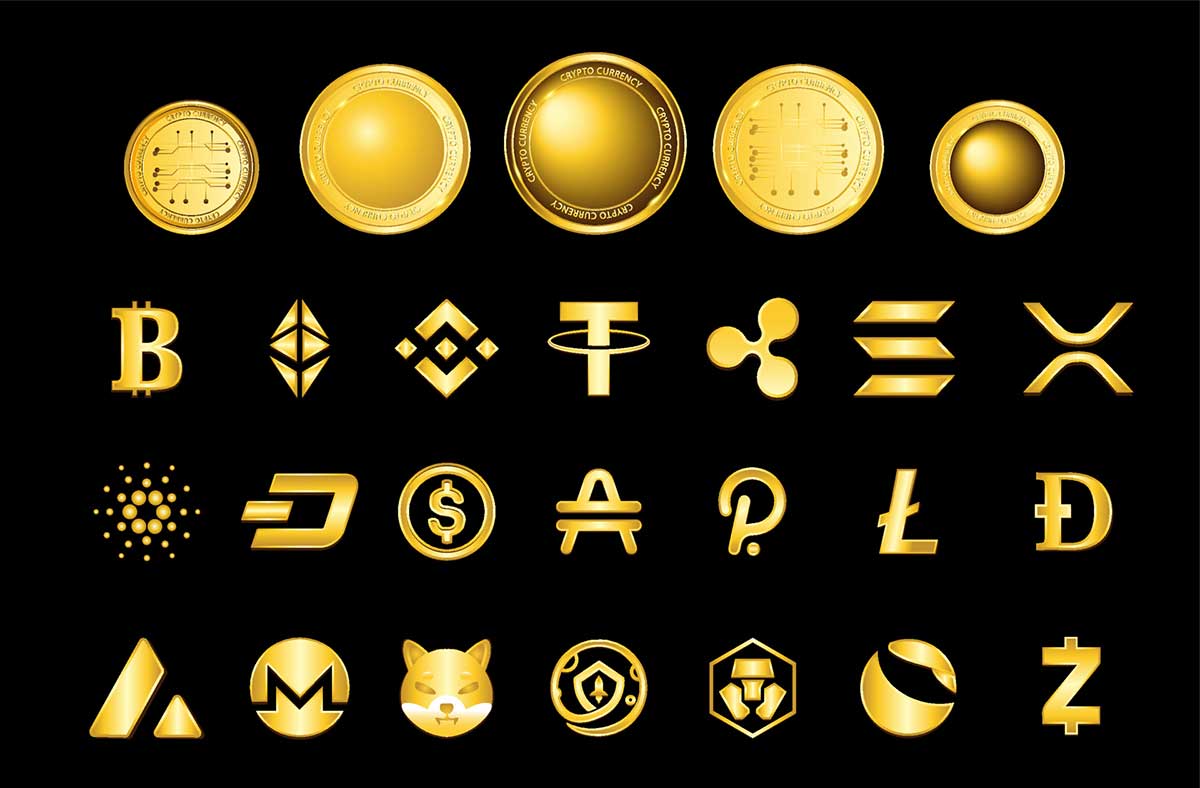How NFTs are Stored on the Blockchain: A Comprehensive Guide

Nfts are stored on the blockchain as unique tokens with their ownership and transaction history recorded on a decentralized ledger. The rise of non-fungible tokens (nfts) has captured the attention of the art and collectibles market, offering a unique way to buy, sell, and trade digital assets.
But how exactly are these digital assets stored on the blockchain? Nfts, unlike cryptocurrencies, are unique and indivisible, making them perfect for representing ownership of one-of-a-kind items like digital art, music, or even virtual real estate. They are stored on the blockchain, a distributed ledger that records transactions across multiple computers, ensuring transparency, security, and immutability.
Each nft is assigned a unique identifier that is stored on the blockchain, along with information about its ownership, provenance, and transaction history. This allows collectors and traders to verify authenticity and trace the ownership of nfts, providing a revolutionized way of buying, selling, and owning digital assets securely and transparently.

Credit: cryptoadventure.com
Understanding Nfts And Blockchain Technology
What Are Nfts?
Nfts, or non-fungible tokens, have been making headlines recently as digital assets that can be bought, sold, and owned. Unlike cryptocurrencies such as bitcoin or ethereum, which are interchangeable and have the same value, nfts are unique and cannot be exchanged on a like-for-like basis.
Nfts are built on blockchain technology, which provides the infrastructure for their creation and storage.
The Basics Of Blockchain Technology
Blockchain technology is a decentralized digital ledger that records transactions across multiple computers. It operates through a network of computers, referred to as nodes, which work together to verify and validate each transaction. Here are the key points to understand about blockchain technology:
- Decentralization: Blockchain operates on a peer-to-peer network, where every participating computer has access to the same information. This eliminates the need for a central authority to control and manage transactions.
- Transparency: All transactions recorded on the blockchain are visible to anyone on the network. This transparency ensures that the history of ownership for an nft can be traced back to its creation.
- Immutability: Once a transaction is recorded on the blockchain, it cannot be altered or deleted. This immutability ensures the security and integrity of the recorded transactions.
- Consensus mechanism: Blockchain uses consensus mechanisms, such as proof of work or proof of stake, to validate and verify transactions before they are added to the blockchain. This process ensures that only legitimate transactions are included and prevents fraud.
The Relationship Between Nfts And Blockchain
Nfts rely on blockchain technology for their creation, storage, and ownership. The relationship between nfts and blockchain can be summarized by the following points:
- Unique identification: Every nft has a unique identification, or token, that distinguishes it from other tokens. This token is stored on the blockchain, providing a digital certificate of authenticity and ownership for the nft.
- Smart contracts: Nfts are often created using smart contracts, which are self-executing agreements built on the blockchain. Smart contracts define the specific terms and conditions of the nft, including details about its ownership, royalties, and any additional rights or restrictions.
- Secure storage: Nfts are stored on the blockchain, making them safe from loss or theft. The blockchain’s decentralized nature ensures that the nft can be accessed by its owner from anywhere in the world, without the risk of relying on a single centralized storage system.
- Verification of authenticity: The blockchain serves as a trusted source of verification for the authenticity and ownership of nfts. Anyone can check the blockchain to confirm the history of transactions and ensure that the nft is genuine.
Nfts are a new form of digital asset that rely on blockchain technology for their creation, storage, and verification. The blockchain’s decentralized and transparent nature ensures the security and integrity of nft transactions, making it an ideal platform for the growing nft market.
The Role Of Smart Contracts In Nft Storage
Explaining Smart Contracts
Smart contracts play a crucial role in the storage of nfts on the blockchain. Let’s dive into what smart contracts are and how they work:
- Smart contracts are self-executing contracts with the terms of the agreement written directly into code. Once the conditions specified in the code are met, the contract is automatically executed without any need for intermediaries.
- These contracts are built on blockchain technology, which ensures transparency, security, and immutability. They operate on decentralized networks like ethereum, where they are stored on the blockchain alongside the nfts themselves.
- Smart contracts utilize blockchain’s distributed ledger technology to provide a decentralized and tamper-proof solution for storing nft ownership information. By leveraging the power of the blockchain, smart contracts eliminate the risk of fraud or manipulation.
How Smart Contracts Ensure Security And Authenticity
Smart contracts bring several benefits to the storage of nfts, particularly in terms of security and authenticity:
- Immutability: Once an nft is created and its ownership recorded on the blockchain, it cannot be altered or tampered with. This immutability ensures that the authenticity and ownership of an nft remain intact, providing a secure storage solution.
- Ownership verification: Smart contracts store information about nft ownership, allowing users to easily verify their ownership rights. By referencing the smart contract associated with an nft, individuals can prove their ownership without reliance on third-party intermediaries.
- Trustless transactions: Smart contracts enable peer-to-peer transactions without the need for trust between parties. The terms of the transaction are coded into the contract, preventing any fraudulent activity and ensuring the secure transfer of ownership.
- Elimination of counterfeiting: By utilizing smart contracts, nft creators can establish provable scarcity and uniqueness. This eliminates the risk of counterfeit nfts, as the smart contract verifies the authenticity of each token.
Interactions Between Nfts And Smart Contracts
Nfts and smart contracts interact seamlessly to provide additional functionality and value to nft owners:
- Automatic royalty payments: Smart contracts can be coded to include a royalty mechanism, allowing creators to receive a percentage of subsequent sales. This ensures that creators continue to benefit from the increasing value of their creations even after the initial sale.
- Programmable actions: Smart contracts can be programmed to trigger specific actions based on predefined conditions. For example, an nft artwork can be programmed to unlock additional content or functionalities when specific conditions are met, adding a new layer of interactivity to nft ownership.
- Storage of metadata: Nfts can store metadata on the blockchain through smart contracts. This metadata can include details about the nft’s creator, creation date, description, and other relevant information. Storing this data on the blockchain ensures the permanent availability and transparency of the nft’s information.
Smart contracts play a vital role in securely storing nfts on the blockchain. By leveraging the trustless nature of blockchain technology, smart contracts ensure the security, authenticity, and additional functionalities of nfts, elevating their value and potential for innovation in the digital art and collectibles space.
The Different Types Of Blockchain Networks For Nft Storage
Blockchain technology has revolutionized the way we store and trade non-fungible tokens (nfts). Nfts are unique digital assets that are stored on the blockchain, ensuring their immutability and traceability. While ethereum is the leading blockchain for nfts, there are other blockchain networks that offer nft storage and trading capabilities.
Let’s explore some of these blockchain networks below:
Ethereum: The Leading Blockchain For Nfts
- Ethereum is currently the most popular blockchain network for nft storage and trading.
- It offers a robust and decentralized platform for creating, buying, and selling nfts.
- Ethereum’s smart contract functionality allows for the creation of unique nfts with programmable features and functionalities.
- The erc-721 and erc-1155 token standards on ethereum provide the foundation for nft storage and compatibility with various marketplaces and wallets.
- The network’s wide adoption and established infrastructure make it a trusted choice for artists, collectors, and investors in the nft space.
Other Blockchain Networks For Nft Storage
Binance Smart Chain
- Binance smart chain (bsc) is a blockchain network developed by cryptocurrency exchange binance.
- It offers lower transaction fees compared to ethereum, making it an attractive alternative for nft creators and traders.
- Bsc’s compatibility with the ethereum virtual machine (evm) allows for the easy migration of nft projects from ethereum to bsc.
- The network’s growing ecosystem of decentralized applications (dapps) and marketplaces provides ample opportunities for nft enthusiasts.
Flow By Dapper Labs
- Flow is a blockchain network developed by dapper labs, the team behind popular nft projects like cryptokitties and nba top shot.
- Flow offers high scalability and throughput to support large-scale nft trading and gaming experiences.
- The network’s architecture is designed to prioritize user experience and developer-friendly features, making it an appealing choice for creators and consumers of nfts.
Tezos
- Tezos is a self-amending blockchain network that offers secure and efficient nft storage capabilities.
- It utilizes a proof-of-stake consensus mechanism, allowing for energy-efficient nft transactions and minting.
- Tezos’ smart contract functionality and governance structure provide flexibility and adaptability for nft projects and upgrades.
Polkadot
- Polkadot is a multi-chain blockchain network that enables interoperability between different blockchains.
- It offers a scalable and secure platform for nft storage while allowing for seamless integration with other blockchain networks.
- Polkadot’s parachain architecture and governance model make it an innovative option for nft creators and collectors.
Avalanche
- Avalanche is a high-performance blockchain network that provides fast nft transactions and low fees.
- Its consensus mechanism, avalanche consensus, ensures quick finality and strong security.
- Avalanche’s vibrant ecosystem of dapps and nft marketplaces presents exciting opportunities for nft enthusiasts.
As the nft market continues to evolve, different blockchain networks are emerging to meet the varying needs of creators and collectors. Ethereum remains the leading choice, but alternatives like binance smart chain, flow, tezos, polkadot, and avalanche offer alternatives that cater to unique requirements.
Whether it’s lower fees, scalability, or interoperability, these blockchain networks provide diverse options for storing and trading nfts.
Storing And Transferring Nfts On The Blockchain
Nfts, or non-fungible tokens, have taken the digital world by storm, revolutionizing the concept of ownership and collectibles. But have you ever wondered how these unique digital assets are stored and transferred on the blockchain? In this section, we will explore the key elements that make it all possible.
Nft Wallets: A Safe Haven For Collectibles
Nft wallets serve as secure digital storage for your valuable nfts. These wallets are specifically designed to provide a safe and convenient way to hold, manage, and trade your unique digital assets. Here are some key points to understand about nft wallets:
- Nft wallets are like virtual vaults that enable you to store your nfts securely.
- They come in various forms, such as web-based wallets, mobile wallets, and hardware wallets.
- Nft wallets use cryptographic keys to ensure the ownership and authenticity of your digital assets.
- Each nft is tied to a specific wallet address, which serves as proof of ownership.
- Some popular nft wallet options include metamask, trust wallet, and ledger.
Nft Marketplaces: Facilitating Buying And Selling
Nft marketplaces act as the go-to platforms for buying, selling, and discovering nfts. These online marketplaces provide a space for artists, creators, and collectors to showcase their digital masterpieces. Here’s what you need to know about nft marketplaces:
- Nft marketplaces serve as the primary venues for trading and exchanging nfts.
- They offer a wide range of digital collectibles, including art, gaming items, music, and more.
- Nft marketplaces have built-in functionalities that facilitate the listing, bidding, and selling of nfts.
- They often leverage blockchain technology to ensure the transparency and traceability of transactions.
- Some popular nft marketplaces include opensea, rarible, and superrare.
Nft Token Standards: Erc-721 And Erc-1155
Nfts are built on different token standards, with erc-721 and erc-1155 being the most commonly used standards. These standards define the rules and specifications for creating and managing nfts on the ethereum blockchain. Here are the key points to understand about erc-721 and erc-1155:
- Erc-721: This token standard is specifically designed for unique, indivisible nfts. Each token represents a distinct digital asset, such as a piece of artwork or a collectible card. Erc-721 tokens cannot be exchanged on a one-to-one basis.
- Erc-1155: Unlike erc-721, erc-1155 allows for the creation of both unique and fungible tokens. This standard provides more flexibility, allowing a single contract to manage multiple nfts and fungible tokens. It is often used in gaming applications where both unique items and in-game currency are needed.
Nfts are stored and transferred on the blockchain through the use of nft wallets, which act as secure digital storage, and nft marketplaces, which facilitate the buying and selling of these unique digital assets. Additionally, specific token standards like erc-721 and erc-1155 define the rules for creating and managing nfts, ensuring their uniqueness and authenticity.
So, whether you’re a collector, artist, or enthusiast, understanding how nfts are stored and transferred on the blockchain is essential in navigating the exciting world of digital ownership.
The Advantages And Challenges Of Storing Nfts On The Blockchain
Benefits Of Storing Nfts On The Blockchain
Storing nfts on the blockchain brings an array of advantages that have revolutionized the concept of owning and trading digital assets. Let’s explore the key benefits of this innovative approach:
- Immutable and verifiable ownership:
- The blockchain ensures that the ownership of an nft is transparent, tamper-proof, and cannot be altered.
- Every transaction and transfer of an nft is recorded on the blockchain, providing indisputable proof of ownership.
- Global accessibility and potential for interoperability:
- Blockchain-based nfts are accessible to anyone with an internet connection, removing barriers to entry and enabling global participation.
- The potential for interoperability allows nfts to seamlessly interact with different platforms, expanding their utility and value.
Challenges And Limitations Of Nft Storage On The Blockchain
While storing nfts on the blockchain offers numerous benefits, there are also challenges and limitations to consider. Let’s dive into some of these factors:
- Scalability and energy consumption concerns:
- As the popularity of nfts increases, the scalability of the blockchain becomes a significant concern. High transaction volumes can result in slower processing times and increased fees.
- The energy consumption associated with blockchain operations, particularly in proof-of-work networks like ethereum, has raised environmental concerns.
- Legal and intellectual property considerations:
- The digital nature of nfts raises complex legal and intellectual property issues. Determining ownership rights and enforcing copyright protection can be challenging in decentralized environments.
- The lack of standardized legal frameworks governing nfts can lead to legal uncertainties and disputes.
Storing nfts on the blockchain offers benefits such as immutable ownership and global accessibility. However, challenges such as scalability, energy consumption, and legal considerations should be addressed to ensure the sustainable growth and widespread adoption of this exciting technology.
Best Practices For Securely Storing Nfts On The Blockchain
Decentralized finance has revolutionized the digital world, providing new opportunities for creators and collectors through non-fungible tokens (nfts). But as the demand for nfts grows, so does the need for secure storage solutions on the blockchain. In this section, we will explore the best practices for securely storing nfts, ensuring the protection of your valuable digital assets.
Choosing The Right Nft Storage Solution
When it comes to storing your nfts, selecting the right storage solution is crucial. Consider the following key points:
- Wallet compatibility: Choose a storage solution that is compatible with popular blockchain wallets such as metamask or walletconnect. This ensures seamless integration and ease of use.
- Decentralized storage: Opt for decentralized storage options like ipfs (interplanetary file system) or arweave to securely store your nfts. These platforms distribute data across multiple servers, reducing the risk of data loss.
- Third-party platforms: Explore reputable nft marketplaces and platforms that offer built-in storage solutions. These platforms often have additional security measures in place to safeguard your assets.
- Cold storage: For enhanced security, consider cold storage solutions like hardware wallets or offline storage devices. These physical devices store your private keys offline, keeping them away from potential online threats.
Understanding Gas Fees And Transaction Costs
Gas fees and transaction costs are important factors to consider when storing your nfts on the blockchain. Here are a few key points to keep in mind:
- Gas fees: Gas fees refer to the cost of computational resources required to execute transactions on the blockchain. Different blockchain networks have varying gas fee structures, so it’s essential to research and understand the fees associated with storing your nfts.
- Transaction costs: In addition to gas fees, transaction costs may also include network fees and platform fees. These costs can vary depending on the blockchain network and the storage solution you choose. Consider these costs when deciding on the most suitable storage option for your nfts.
Implementing Proper Security Measures
Safeguarding your nfts from potential threats requires implementing proper security measures. Consider the following points:
- Strong passwords: Create strong, unique passwords for your wallets and storage platforms. Utilize a combination of uppercase and lowercase letters, numbers, and special characters.
- Two-factor authentication (2fa): Enable two-factor authentication whenever possible to add an extra layer of security to your storage accounts. This ensures that only authorized individuals can access your nfts.
- Regular updates: Stay updated with the latest security patches and updates for your wallets and storage solutions. Developers often release these updates to address security vulnerabilities and enhance protection.
- Backup your wallet: Backup your wallet and private keys in multiple secure locations. This ensures that even if one backup is compromised, you still have access to your nfts.
- Stay vigilant: Be cautious of phishing attempts, suspicious links, and unverified platforms. Verify the authenticity and security of platforms before storing your nfts.
By adhering to these best practices, you can securely store your nfts on the blockchain and enjoy the benefits of decentralized digital ownership. Take the time to choose the right storage solution, understand the associated costs, and implement robust security measures to protect your valuable nft assets.
Nft Storage Innovations And Future Developments
Nfts, or non-fungible tokens, have taken the digital world by storm. These unique digital assets are stored on the blockchain, ensuring their security and immutability. But how exactly are nfts stored on the blockchain? In this section, we will explore some of the innovations and future developments in nft storage.
Layer 2 Solutions: Enhancing Scalability And Efficiency
- Layer 2 solutions address the scalability issues faced by the ethereum blockchain, making it more feasible to store and trade nfts.
- These solutions include technologies such as sidechains, state channels, and plasma chains.
- By moving some of the transaction processing off the main ethereum chain, layer 2 solutions can significantly increase the number of nfts that can be stored and traded.
- Layer 2 solutions also aim to reduce transaction fees and improve transaction speed, making nft storage and trading more efficient for users.
Cross-Chain Nft Solutions: Bridging Different Blockchains
- Cross-chain nft solutions offer the ability to interact with and store nfts on multiple blockchains, bridging the gap between different ecosystems.
- These solutions enable the seamless transfer of nfts between blockchains, allowing users to access a wider range of assets.
- Interoperability is a key aspect of cross-chain nft solutions, ensuring that nfts can be easily moved and traded across different blockchains.
- Cross-chain nft solutions open up new opportunities for collaboration and innovation in the nft space, as artists and collectors can connect with a broader audience.
Future Trends In Nft Storage
- As the nft market continues to grow and evolve, there are several exciting developments on the horizon for nft storage.
- Improved standards and protocols for nft storage will enhance security and interoperability, making it easier for users to manage their digital assets.
- Decentralized storage solutions, such as ipfs (interplanetary file system), offer a more distributed and resilient approach to nft storage, reducing reliance on centralized servers.
- The integration of artificial intelligence and machine learning technologies could enable automated categorization and metadata management for nfts, streamlining the organization and discovery of digital assets.
- Additionally, advancements in hardware and network infrastructure will contribute to faster and more efficient nft storage and retrieval.
Nft storage is undergoing constant innovation and development. Layer 2 solutions and cross-chain nft solutions are addressing scalability and interoperability challenges, while future trends in nft storage hold promise for enhanced security, decentralization, and automation. As the nft ecosystem continues to evolve, these advancements will play a crucial role in shaping the future of digital asset storage.
Frequently Asked Questions Of How Are Nfts Stored On The Blockchain
How Are Nfts Stored On The Blockchain?
Nfts are stored on the blockchain using smart contracts. Each nft is given a unique token id and stored in a digital wallet. The ownership and transaction history of the nft are recorded on the blockchain, providing transparency and security.
Can Nfts Be Stored Offline?
No, nfts cannot be stored offline. Since nfts are digital assets, they are stored on the blockchain, which is an online decentralized network. To access and manage your nfts, you need an internet connection and a compatible digital wallet.
Are Nfts Secure On The Blockchain?
Yes, nfts are secure on the blockchain. The decentralized nature of the blockchain ensures that transactions and ownership records cannot be altered or tampered with. Additionally, the use of cryptographic technology provides an extra layer of security, making it difficult for unauthorized individuals to access or duplicate nfts.
Conclusion
The storage of nfts on the blockchain is a fundamental aspect of their existence and security. The blockchain provides a decentralized and transparent environment where digital assets can be securely stored and verified. Nfts are stored using smart contracts, which ensure that ownership and transaction history are recorded immutably.
This eliminates the need for intermediaries and allows for the tokenization of unique digital assets. Additionally, the blockchain ensures that nfts are easily accessible and transferable across various platforms, creating a seamless user experience. As the popularity of nfts continues to grow, it is imperative to understand how they are stored on the blockchain to fully appreciate their value and potential.
With advancements in blockchain technology, we can expect further improvements in nft storage, making them even more secure and efficient in the future. So, whether you are an artist, collector, or investor, understanding the storage of nfts on the blockchain is crucial for navigating this exciting digital landscape.







